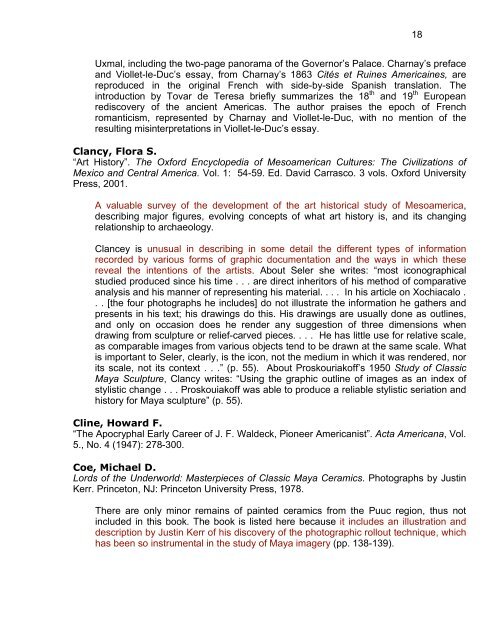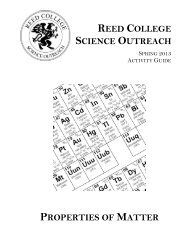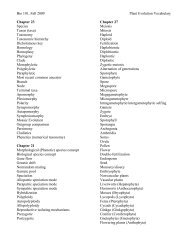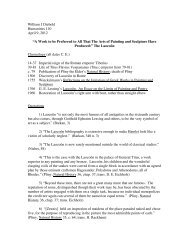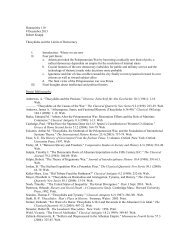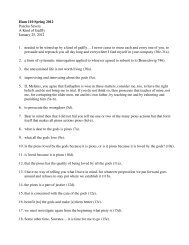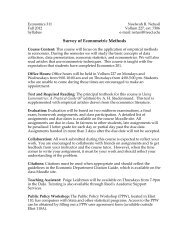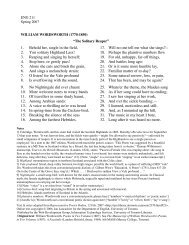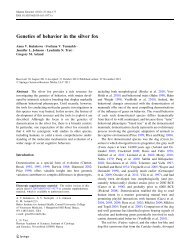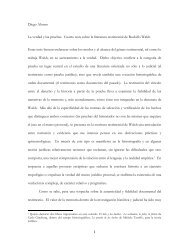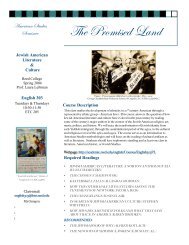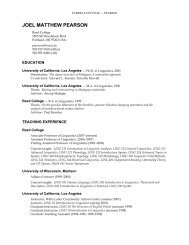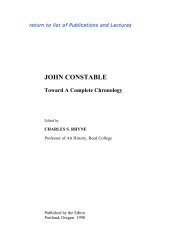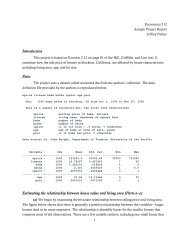Graphic and Photographic Documentation - Reed College
Graphic and Photographic Documentation - Reed College
Graphic and Photographic Documentation - Reed College
You also want an ePaper? Increase the reach of your titles
YUMPU automatically turns print PDFs into web optimized ePapers that Google loves.
Uxmal, including the two-page panorama of the Governor’s Palace. Charnay’s preface<br />
<strong>and</strong> Viollet-le-Duc’s essay, from Charnay’s 1863 Cités et Ruines Americaines, are<br />
reproduced in the original French with side-by-side Spanish translation. The<br />
introduction by Tovar de Teresa briefly summarizes the 18 th <strong>and</strong> 19 th European<br />
rediscovery of the ancient Americas. The author praises the epoch of French<br />
romanticism, represented by Charnay <strong>and</strong> Viollet-le-Duc, with no mention of the<br />
resulting misinterpretations in Viollet-le-Duc’s essay.<br />
Clancy, Flora S.<br />
“Art History”. The Oxford Encyclopedia of Mesoamerican Cultures: The Civilizations of<br />
Mexico <strong>and</strong> Central America. Vol. 1: 54-59. Ed. David Carrasco. 3 vols. Oxford University<br />
Press, 2001.<br />
A valuable survey of the development of the art historical study of Mesoamerica,<br />
describing major figures, evolving concepts of what art history is, <strong>and</strong> its changing<br />
relationship to archaeology.<br />
Clancey is unusual in describing in some detail the different types of information<br />
recorded by various forms of graphic documentation <strong>and</strong> the ways in which these<br />
reveal the intentions of the artists. About Seler she writes: “most iconographical<br />
studied produced since his time . . . are direct inheritors of his method of comparative<br />
analysis <strong>and</strong> his manner of representing his material. . . . In his article on Xochiacalo .<br />
. . [the four photographs he includes] do not illustrate the information he gathers <strong>and</strong><br />
presents in his text; his drawings do this. His drawings are usually done as outlines,<br />
<strong>and</strong> only on occasion does he render any suggestion of three dimensions when<br />
drawing from sculpture or relief-carved pieces. . . . He has little use for relative scale,<br />
as comparable images from various objects tend to be drawn at the same scale. What<br />
is important to Seler, clearly, is the icon, not the medium in which it was rendered, nor<br />
its scale, not its context . . .” (p. 55). About Proskouriakoff’s 1950 Study of Classic<br />
Maya Sculpture, Clancy writes: “Using the graphic outline of images as an index of<br />
stylistic change . . . Proskouiakoff was able to produce a reliable stylistic seriation <strong>and</strong><br />
history for Maya sculpture” (p. 55).<br />
Cline, Howard F.<br />
“The Apocryphal Early Career of J. F. Waldeck, Pioneer Americanist”. Acta Americana, Vol.<br />
5., No. 4 (1947): 278-300.<br />
Coe, Michael D.<br />
Lords of the Underworld: Masterpieces of Classic Maya Ceramics. Photographs by Justin<br />
Kerr. Princeton, NJ: Princeton University Press, 1978.<br />
There are only minor remains of painted ceramics from the Puuc region, thus not<br />
included in this book. The book is listed here because it includes an illustration <strong>and</strong><br />
description by Justin Kerr of his discovery of the photographic rollout technique, which<br />
has been so instrumental in the study of Maya imagery (pp. 138-139).<br />
18


